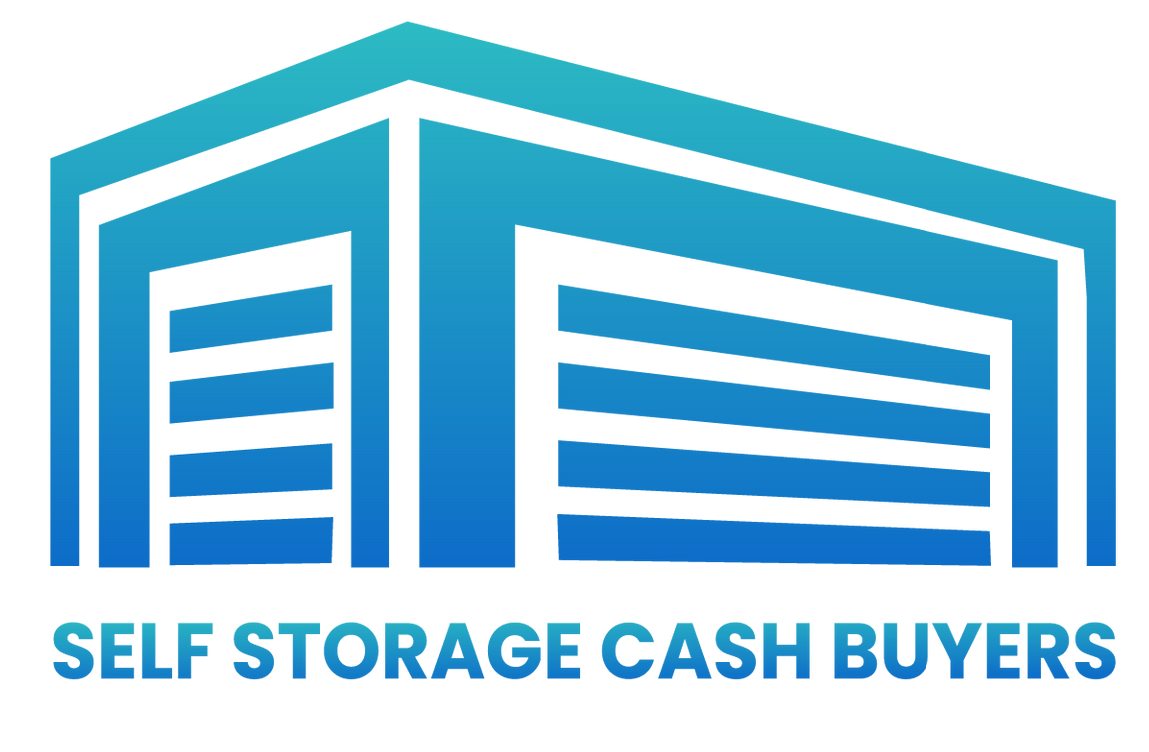Self Storage Marketing Tips to Stand Out [2023]
Published on December 16, 2023
Nick Stevens
AUTHOR
Free Offer Form
The self-storage business has grown tremendously, but so has the competition. Even small businesses have started using advanced marketing techniques to stand out.
To keep your storage company doing well, you should also focus on learning the newest and most effective marketing ideas and strategies.
Let's make self-storage marketing easy to understand—we'll start with the basics, clarify why it's crucial, and then discuss various ways to promote your business's storage service.
Effective marketing is an investment that can potentially expand your profits even when your storage facilities are at full capacity.
Exploring the Self-Storage Industry
Self-storage as an industry is part of the commercial real estate business. It's getting bigger because more cities are growing, the economy is improving, and new businesses are emerging.
The key signs showing how this competitive sector has evolved over the years are its growth, trends, and challenges.
Growth and Trends
A recent market report predicts that by 2023, the global self-storage market will be worth around $58.26 billion, and it's expected to keep growing at a rate of about 4.37% each year. By 2028, it could reach $89.94 billion.
The self-storage market is also slated to improve in the United States. It's projected to expand from $43.34 billion in 2023 to around $48.73 billion by 2028.
The current trends in self-storage industry show that this business is expected to keep growing in the coming years as more people and big or small businesses begin renting out self-storage facility spaces.
Moreover, this growth is influenced and will continue to be influenced by many factors like the industry's size, sales volume, different types of storage options, upcoming trends, and demand & supply.
Moving on, it's essential to acknowledge some of the challenges that newcomers may face when entering the storage rental business.
Challenges Faced by Self-Storage Businesses
First, starting your own self-storage business is an ambitious endeavor, mainly due to factors like competition.
Some places have too many self-storage facilities, which means lots of competition.
Therefore, if you want your self-storage company to stand out and succeed, you must employ creative marketing ideas.
You'll be constantly learning and tackling daily operational challenges to keep operations running efficiently and to satisfy customers.
Competitively dealing with the current challenges in this industry also means investing in new technologies and amenities for your storage space business.
For example, many rental businesses are improving operations through automation to reduce the amount of human error.
Other businesses are adding security features to their storage facilities, such as video surveillance and gate access, to keep their clients' property safe.
You may also want to consider improving operations with management software to streamline your business's various tasks like booking, payment processing, and customer management.
Importance of Marketing in the Self-Storage Industry
Marketing in this real estate-adjacent industry is like a spotlight that helps storage operators get noticed among their competitors, fill their storage units, and make more money.
It's all about letting people know your service exists and why they should choose your storage facility.
Role of Marketing in the Success of Self-Storage Businesses
Effective self-storage facility marketing is essential for success in this industry. It's about building a strong brand, gaining customer trust, and meeting unique storage needs.
It would help to try the following methods.
- Create awareness of your storage operation and its services.
- Grow your customer base.
- Differentiate your storage facility from the competition.
- Increase sales and revenue.
- Boost brand reputation and loyalty.
Benefits of Effective Marketing Strategies
You reap the benefits of your marketing strategy once it has proven its effectiveness. For example, effectively increasing sales and revenue is already a benefit.
Listed below are some of the other benefits of promoting your self-storage investment through effective marketing.
- More customers: Well-executed marketing attracts more customers, which leads to higher occupancy rates and more rental income.
- Improved revenue: More tenants mean more rental income, which makes your business more profitable.
- Competitive advantage: A well-structured marketing plan, like an effective Google Ads campaign, can help your self-storage facility stand out.
- Cost-effectiveness: Effective and targeted ads for self-storage help minimize wasting marketing dollars.
- Business growth: Successful marketing may necessitate expanding the business by adding more storage units or facilities.
Self-Storage Marketing Strategies
Even experienced self-storage companies can find marketing challenging. To make it simpler, begin by learning about your audience through market research and then make a plan.
Next, decide whether you want to use online, offline strategies, or both.
Identifying Target Audience and Market Segmentation
Identifying your target buyers and finding your place in the market is essential for self-storage marketing.
Your target audience is the people most likely to use your self-storage services. To find them, you need to understand what they like and want. Next, identify what you can offer that aligns with their potential needs.
For example, do they need short-term or long-term storage? Climate-controlled units? Specialty storage for possessions like boats or RVs?
Market segmentation divides your target clients into smaller groups based on shared characteristics.
For example, you might segment your market by location, storage needs, or demographics.
Once you understand your target customers and have found your specific niche, you can tailor your marketing and strategies for each group.
You can take advantage of resources like the Self Storage Association to help with your market research.
Developing a Marketing Plan
A good marketing plan is crucial in any business endeavor. It's your roadmap for achieving goals and using your budget wisely.
A well-structured marketing plan should include the following.
- Clear Goals: Set specific and achievable marketing goals, like increasing occupancy or revenue.
- Budget Planning: Allocate your marketing budget wisely across online and offline channels.
- Timelines: Create a campaign schedule to stay organized and prepared for peak periods.
- Online and Offline Strategies: Use online tactics like search engines, social networking sites, and offline tactics like print and direct mail.
- Measuring Success: Define key metrics to track performance, such as website traffic and ROI.
- Adaptability: You can't just rely on word of mouth, so stay flexible and adjust strategies based on changing market conditions.
Online Marketing Strategies
Consider internet marketing your edge in this digital age, especially in making your storage advertising ideas extend their reach to the virtual world.
This powerful tool can be used to employ various strategies to reach mobile users through website optimization, SEO, PPC advertising, and active engagement on social networking platforms.
With digital advertising, you leverage the convenience of mobile devices to place ads on Google, ensuring your presence when potential customers search for self-storage solutions.
You may also wish to optimize your Google Business Profile (formerly known as Google My Business) to improve visibility and local search results.
It's like constructing a strong bridge that connects you directly to your audience in the bustling online landscape, allowing your businesses to thrive amidst the digital competition.
Offline Marketing Strategies
Offline or traditional marketing encompasses classic advertising methods, excluding online platforms.
These include TV and radio commercials, print magazine ads, flyers, and even direct mail campaigns sent directly to a potential customer's doorstep.
You can also explore outdoor advertising through billboards and establish partnerships with local businesses in adjunct industries, like moving companies.
Engaging in community events and leveraging word-of-mouth recommendations are other potentially effective offline strategies.
Sponsoring a local sports team and joining a local non-profit association help increase offline visibility, too.
Digital Marketing for Self-Storage Businesses

With the increasing reliance on the internet for discovering products and services, leveraging digital media is crucial for reaching your target clients effectively.
It's like the difference between being open 24/7 and only during regular business hours—digital advertising has an edge in keeping the conversation going even when the lights are out.
Website Optimization
Your website serves as the digital face of your self-storage business. Optimizing it is essential.
Ensure your website is mobile-responsive, user-friendly, and optimized for search engines (SEO).
To improve your online presence, make your self-storage website easy to navigate, informative, and simplify the rental process.
This also means being 100% transparent about your self-storage units, prices, and location. And if you add an online booking system, it makes it easier for people to rent from you.
Search Engine Optimization (SEO)
SEO is the strategy of optimizing your website so that it ranks higher in search engine results pages (SERPs).
The importance of SEO cannot be overstated. We recommend conducting keyword research to identify relevant search terms that potential self-storage customers may use when seeking storage solutions.
When you use the right keywords in your content, you can also get other quality websites to link to yours.
With the right people helping you accomplish this, customers will find your storage business first when they search online for storage solutions.
The right SEO experts can drive traffic and potential clients to your website, improving its search results rankings and gaining more renters.
Pay-Per-Click (PPC) Advertising
Besides targeting keywords like SEO, PPC advertising lets you target specific demographics, ensuring your ads reach the right audience.
PPC advertising is online advertising where you earn each time new customers click on your ad.
You can use platforms like Google Ads and Microsoft Ads to find buyers or renters actively looking for self-storage.
PPC ads can be very effective for generating leads and sales but can also be expensive.
If you decide to use PPC advertising, it is important to target your ads carefully and set a budget you can afford.
Social Media Marketing
Create profiles for your self-storage business on websites like Facebook, Instagram, and Twitter. Use these platforms to share helpful content, run focused ads, and build a community of loyal customers.
Here are some tips for promoting your self-storage rental on social networking sites.
- Post Regularly: Post blog posts, articles, pictures, and videos your target customers would love. Don't forget to include a link or button to book a self-storage unit.
- Host contests and giveaways: Get your followers excited with prizes like discounts on extra space purchases, referral incentives, gift cards, or other goodies.
- Treat your followers right:
Offer a special customer discount to your followers and interact with them by responding to comments and questions.
Traditional Marketing for Self-Storage Businesses
Traditional marketing refers to conventional methods of promoting your self-storage business that doesn't rely on digital platforms.
While a comprehensive digital marketing strategy is a popular modern option, traditional strategies can still be very effective for storage rental businesses.
Print Advertising
Whether through newspapers, magazines, or local self-storage directories, print ads can reach individuals who are less active online or target specific demographics, like local businesses, and homeowners.
High-quality brochures, flyers, and local newspaper ads can effectively convey your storage services and attract potential customers.
Flyers, in particular, are a budget-friendly way to quickly rent out empty storage units, especially when you offer attractive deals or coupons.
Ensure your printed materials look good, have interesting information, and include contact details.
Direct Mail Marketing
Direct mail marketing campaigns can be highly targeted.
This advertising strategy refers to any kind of physical communication you send to capture the attention of potential self-storage customers and drive inquiries.
When creating direct mail marketing materials for your self-storage business, it's important to personalize them as much as possible.
The customized flyers, postcards, coupons, or other printed materials you create can be delivered via direct mail.
So, consider it as extending a warm welcome to your potential customers right at their doorstep.
Outdoor Advertising
Outdoor advertising on billboards or prominent signage near busy roads can serve as effective visual reminders of your business.
When creating outdoor ads for your self-storage business, it is important to use bold and eye-catching visuals.
Outdoor advertising can be a great way to reach a large number of people in a short amount of time. So, keep your message short and to the point.
Besides billboards and signages, businesses often sponsor outdoor events like sports games, music festivals, or community gatherings.

Measuring and Evaluating Marketing Efforts
Measurement and evaluation are crucial to determine which self-storage marketing ideas have been effective and ineffective.
As a result, you can allocate your marketing budget more wisely and get better marketing outcomes overall.
Key Performance Indicators (KPIs) for Self-Storage Marketing
To assess the effectiveness of your self-storage facility marketing, it's vital to track key performance indicators (KPIs).
7 KPIs for self-storage marketing services include the following.
- Occupancy rate: Percentage of rented units, reflecting demand and profitability.
- Average rental rate: Average monthly rent per storage unit, showcasing premium pricing.
- Cost per acquisition (CPA): Average expense to acquire a new customer, signifying effective marketing and cost-efficient customer renting.
- Customer satisfaction: Customer contentment with the facility and its services, indicating customer retention and quality service.
- Net operating income (NOI): Income after operating expenses, illustrating efficient and profitable operations.
- Cash flow: Net monthly cash movement, highlighting a positive balance if the facility generates more income than it spends.
- Return on investment (ROI): Overall profitability by dividing net income by total investment cost, signifying a sound investment.
Tools and Techniques for Measuring Marketing Success
Don't just collect data and let it sit there. Analyze your data regularly to see what is and isn't working.
Utilize various tools and techniques to measure the success of your self-storage marketing with the following.
- Google Analytics: To measure a website using Google Analytics, create an account and add a tracking code to each webpage, allowing it to collect user interaction data.
- CRM software: Customer Relationship Management software tracks leads, sales, and customer satisfaction levels to identify high-performing campaigns and areas for improvement.
- Social media analytics: Monitor engagement, reach, and conversion metrics on social platforms to optimize your campaigns. These are available on each platform's settings menu.
- Surveys and feedback: Collect customer experience to gauge satisfaction and identify areas for improvement.
Frequently Asked Questions
Got more questions? Learn more about promoting and growing your self-storage business here.
What Is Self-Storage Marketing?
Utilizing a variety of tactics to sell self-storage facilities and draw consumers is known as self-storage marketing.
These tactics can involve on- and offline marketing initiatives to raise occupancy rates and develop brand recognition.
Successful self-storage marketing can increase profits. One method is to showcase the benefits of using self-storage units, such as safety, privacy, capacity, and accessibility.
How Can I Effectively Market My Self-Storage Business?
To effectively market your self-storage business, use online strategies like website optimization (Google Ads), SEO, PPC advertising, and social networking sites.
You can also use offline methods such as print advertising, direct mail, and outdoor ads.
Remember to continuously measure your efforts using tools like Google Analytics and adapt to changing trends for better results in the competitive self-storage market.
What Are the Best Online Marketing Strategies for Self-Storage Businesses?
The best digital advertising strategies for self-storage businesses include website optimization, SEO, PPC advertising, & social media marketing.
In addition to online strategies, optimize your Google Business Profile, offer online booking and payments, and track marketing results for refinements.
These strategies help reach a broader audience, generate leads, and increase conversions.
How Can I Measure the Success of My Self-Storage Marketing Efforts?
To measure the success of your self-storage marketing ideas, you can track key performance indicators (KPIs) like the following.
- Occupancy rate
- Average rental rate
- Cost per acquisition (CPA)
- Customer satisfaction
- Net operating income (NOI)
- Cash flow
- Return on investment (ROI)
Utilize tools like Google Analytics, CRM software, social media analytics, and storage customer feedback to gather data and assess the effectiveness of your strategies.
What Are the Common Challenges Faced by Self-Storage Businesses in Marketing?
The common marketing challenges rent storage businesses face include dealing with intense competition, ensuring effective marketing to stand out, and addressing operational challenges for efficient customer service.
Moreover, this industry must keep up with technological advancements and facility enhancements to stay competitive.
It's a good thing an effective marketing strategy can help address these challenges.
Conclusion
In the ever-evolving landscape of self-storage marketing, understanding your target customers, developing comprehensive marketing plans, and embracing online and offline strategies are keys to success.
To excel, identify your audience, craft a comprehensive marketing plan, and blend online and offline strategies.
Embrace digital advertising—optimize your website, use SEO, PPC ads, and social media. But also, don't ignore offline strategies like print ads, direct mail, and outdoor promotions.
Lastly, offer online booking for convenience and perpetually evaluate results to stay agile in this ever-changing sector.


